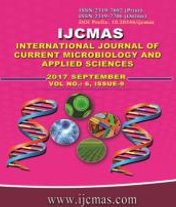


 National Academy of Agricultural Sciences (NAAS)
National Academy of Agricultural Sciences (NAAS)

|
PRINT ISSN : 2319-7692
Online ISSN : 2319-7706 Issues : 12 per year Publisher : Excellent Publishers Email : editorijcmas@gmail.com / submit@ijcmas.com Editor-in-chief: Dr.M.Prakash Index Copernicus ICV 2018: 95.39 NAAS RATING 2020: 5.38 |
Agricultural planning relying on evapotranspiration suffers due to inaccuracy in its estimation. The non-availability of meteorological parameters required for accurate estimation of reference evapotranspiration (ETo) resulted in the development of different methods of ETo estimation. The present study compares various universally accepted methods of ETo estimation by considering the Penman Monteith (FAO 56 PENMEN-MONTEITH) as a standard method. Among All the five models when compared with FAO Pen-Men Method, Makkins Model was found to be the best model with R2 97 percent and Ivanos model as least performance model with R2 86 percent for the present location. It was found that reference evapotranspiration was higher in June –July and least in December-January. Among 15 years, average evapotranspiration was higher in 2007 (2.65 mm/day) and least in 2014 (2.32 mm/day.
 |
 |
 |
 |
 |